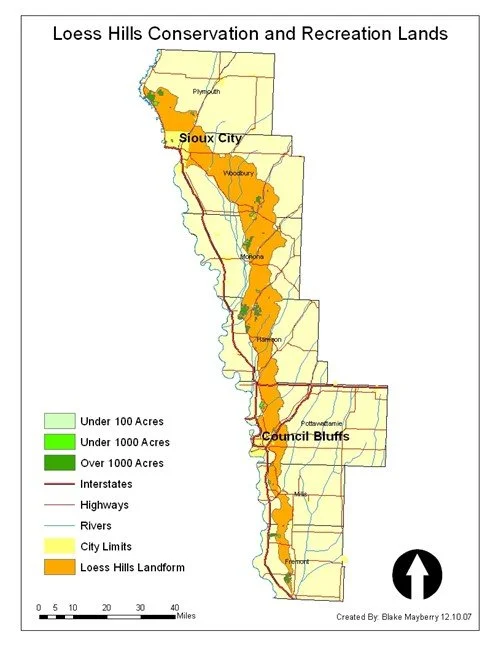
Framing the Fragile Giants
My master’s thesis research from 2006-2008 culminated in a research paper published in The Geographical Bulletin in 2011 investigating the roles of scientific discourse and media in promoting natural resource policy . Using a mixed-methods approach, I focused on an attempt to create a unit of the National Park System in Iowa’s Loess Hills ecoregion in the late 1990s. Using GIS to map out the spatio-temporal patterns of conservation land purchases in the Loess Hills, I contexualized the episode in the midst of a much larger land acquisition movement dating back to the 1970s, in which the State of Iowa, the USFWS, USACE, NPS, and various county, local governments and nonprofit organizations purchased land and easements in the Loess Hills and surrounding floodplains. The pace of land acquisition increased markedly following the Farm Crisis of the 1980s, when land prices are depressed - changing environmental conditions enabling the growth of new spatial forms. In the 1990s, the Des Moines Register began a concerted editorial campaign advocating for the creation of a National Park in Iowa’s Loess Hills. I conducted critical discourse analysis of the entirety of the Register’s coverage, in addition to coverage from other regional newspapers like the Omaha World-Herald. The effort was eventually abandoned after local backlash to the perceived threat of federal land acquisition and land management. For me, in terms of my own scholarly development, this represents a first step towards understanding the socio-spatial ecology of the postindustrial transition in late capitalist North America. How does the state, and society, respond when environmental conditions change? Increasing urbanization, consolodation in the farming sector, all producing waves of change in society - how does this change the map itself? Framing the Fragile Giants is an exploration into how and why that map is changing.



